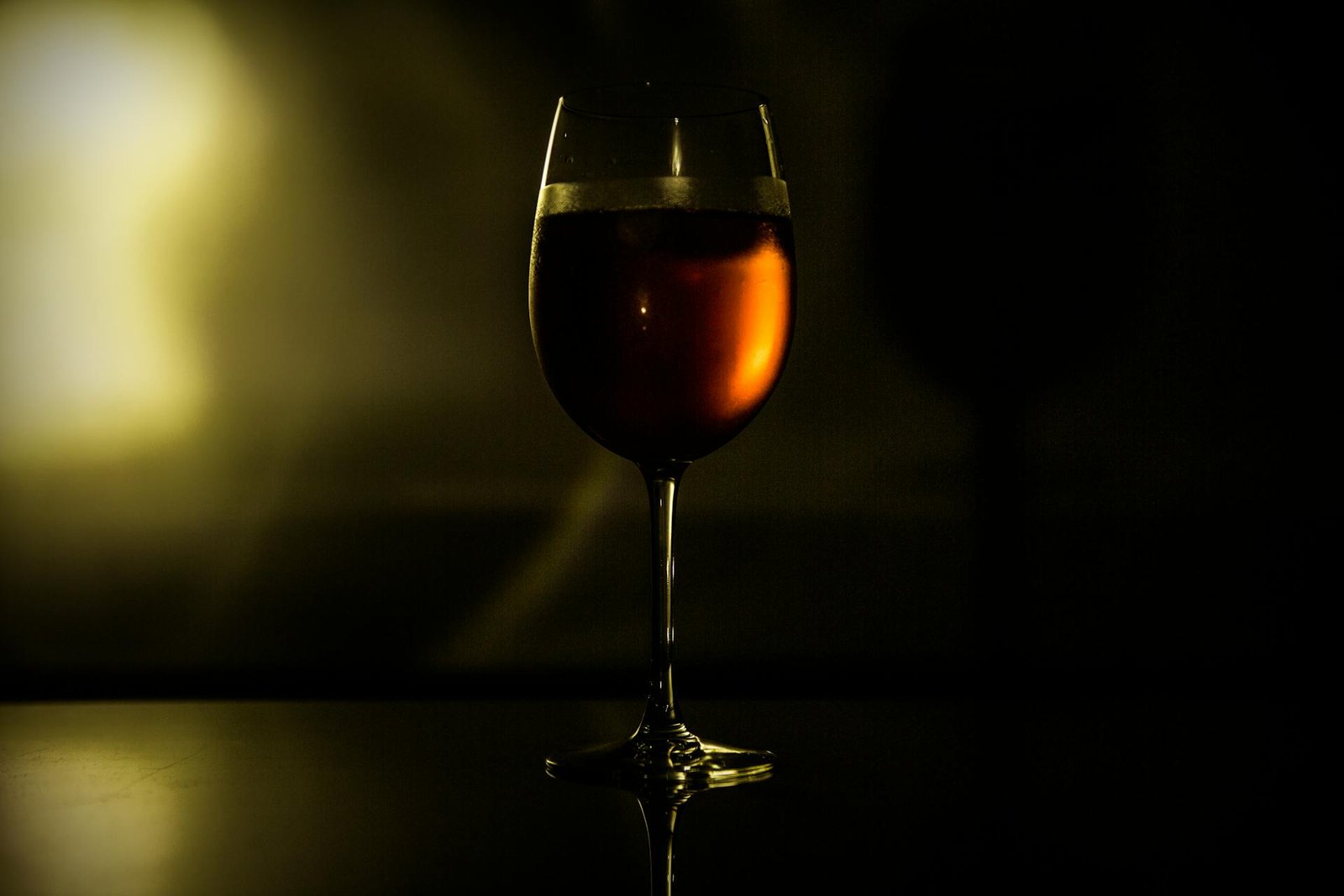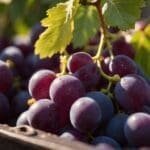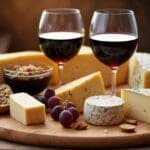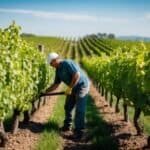This post may contain affiliate links. Please read my disclosure policy.
When it comes to choosing wine, the price tag might make you wonder about the difference between expensive wine and its cheaper counterparts.
Expensive wine is often better due to its superior quality, balanced taste, and meticulous production methods. Wines from regions known for quality, such as South Australia, use grapes from low-yield vines, resulting in more intense flavours.
You might notice that affordable wines tend to have fewer complexities. Expensive wines undergo processes like oak barrel aging, adding depth and nuance to the flavour.
Even the bottles themselves may be designed to protect the wine from light and heat, preserving its quality over time.
Perception plays a big role in how wines are valued. High-end wines are often associated with prestige and exclusivity. However, there are many value wines that offer great taste without breaking the bank.
Whether you’re looking for a bottle of Barossa Valley Shiraz or a Coonawarra Cabernet Sauvignon, understanding what makes expensive wine better can help you make more informed choices.
Viticulture and Terroir

Viticulture and terroir play a crucial role in the quality and value of wine. The unique conditions of soil and climate, the strategic location of vineyards, and the control of grape yields all contribute to producing high-quality fruit essential for fine wine.
Influence of Soil and Climate
The composition of soil greatly impacts the quality of grapes. In Australia, regions like the Barossa Valley boast diverse soils, from sandy loam to clay. These soils affect drainage, root penetration, and nutrient availability. Proper soil management ensures vines receive the necessary nutrients without waterlogging or stress.
Climate factors such as temperature, rainfall, and sunlight also play vital roles. The Hunter Valley’s warm climate helps in achieving optimal ripeness in grapes like Shiraz and Semillon. Adequate rainfall ensures steady vine growth, while sufficient sunlight aids in sugar production, vital for quality wine.
Vineyard Location and Vine Density
Vineyard location directly influences terroir. Regions such as Margaret River are renowned for their excellent terroir. Their proximity to the ocean moderates temperatures, creating favourable conditions. Hillsides like those found in Adelaide Hills offer excellent drainage and sun exposure, ideal for growing premium grapes.
The density of vines per hectare impacts wine quality too. Higher vine density means each vine has less soil area to utilise, encouraging deeper root growth and reducing yield. This leads to concentrated flavours in the grapes. Optimal vine density is crucial for balance between yield and quality, ensuring premium wine production.
Yield Control and Quality Fruit
Yield control is essential for producing high-quality fruit. Lower yields often result in better fruit concentration, crucial for making premium wines. Winemakers in the Yarra Valley often practice green harvesting, removing excess grape clusters to ensure the remaining ones achieve full ripeness and flavour concentration.
Controlling yields helps in managing consistency and quality across vintages. High-quality grapes, free from excessive water or nutrient dilution, are integral for producing superior wines. Techniques like pruning and canopy management are used to regulate the number of grape clusters, ensuring the production of quality over quantity.
Winemaking Techniques

Winemaking techniques play a crucial role in determining the quality and uniqueness of expensive wines. The following sections cover the key methods that enhance the flavour, texture, and complexity of these wines.
Use of Oak in Aging
The use of oak barrels in the aging process significantly impacts the taste and aroma of wine. Winemakers often use French oak and American oak barrels, each lending distinct characteristics.
French oak provides subtle vanilla and spice notes, enhancing the wine’s complexity. Meanwhile, American oak imparts stronger coconut and vanilla flavours.
New oak barrels are commonly used for high-end wines because they release more tannins and flavours into the wine. The oak aging process not only adds layers of flavour but also allows the wine to develop a smoother texture.
Australian varietals like Barossa Valley Shiraz and Margaret River Cabernet Sauvignon particularly benefit from oak aging, gaining depth and richness. Winemakers carefully select the type and age of oak barrels to tailor the final product’s profile effectively.
Fermentation Processes
Fermentation is a critical step where grape juice transforms into wine, influenced by factors like yeast selection and temperature control.
Expensive wines often undergo unique fermentation processes to achieve superior quality.
Some winemakers use wild yeast instead of cultured yeast to create more complex and unpredictable flavour profiles.
Temperature control during fermentation is another essential element, where low temperatures preserve delicate aromas and higher temperatures enhance bold flavours.
Techniques like malolactic fermentation, commonly used in Chardonnay, convert sharp malic acid into softer lactic acid, creating a creamier mouthfeel. Meanwhile, Australian wines such as Hunter Valley Semillon benefit from specific fermentation methods, ensuring a refined taste.
Sorting and Selection
Sorting and selection are meticulous processes that ensure only the finest grapes make it into the wine. Expensive wines often involve hand-picking and manual sorting to remove any imperfect grapes.
This careful selection enhances the wine’s quality by starting with the best possible fruit. Winemakers might use advanced sorting machines to further refine the selection process, ensuring consistency and purity.
The effort put into sorting also reduces the risk of unwanted flavours and increases the wine’s overall elegance. For instance, Yarra Valley Pinot Noir benefits greatly from precise sorting methods, resulting in a well-balanced and nuanced wine.
Wine Characteristics
When considering what makes expensive wine better, several aspects contribute to its overall quality. These include the complexity and balance of the wine, its flavour profile and aroma, and the colour and intensity.
Complexity and Balance
Expensive wines often display a higher level of complexity and balance.
Complexity refers to the range of flavours and aromas that can be experienced in a single sip. In premium wines, you might notice layers of fruit, spices, and even earthy notes all interacting harmoniously.
Balance is the equilibrium between acidity, sweetness, tannins, and alcohol.
Australian varietals, such as Barossa Valley Shiraz, are known for their well-rounded profiles, with integrated flavours that do not overpower each other. This harmony enhances the drinking experience, making each sip satisfying and enjoyable.
Flavour Profile and Aroma
The flavour profile and aroma of expensive wines are usually more pronounced and nuanced than cheaper alternatives.
A high-quality wine from the Hunter Valley might exhibit rich fruit flavours such as blackberry or plum, complemented by oak flavours like vanilla or cedar.
The aroma can be just as intricate, offering hints of things like spices, flowers, and even mineral notes. These details create a more engaging and memorable tasting experience.
Expensive wines are often aged in oak barrels, adding layers of aroma that develop over time, enhancing the overall sensory experience.
Colour and Intensity
The colour and intensity of a wine can give you clues about its quality. Premium wines often display deeper, more vibrant colours.
For example, a high-end Pinot Noir from Tasmania will have a rich, ruby red hue compared to a lighter, less intense colour found in cheaper bottles.
Intensity refers to the concentration of flavours and aromas. In expensive wines, this intensity is typically more concentrated, providing a fuller-bodied taste.
The tannins in these wines are usually well-integrated, adding structure without overshadowing the other components. This results in a wine that is both visually appealing and deeply flavourful.
Market Dynamics
Understanding the intricacies of market dynamics is essential to grasp why expensive wines are highly valued. Factors such as brand reputation, supply and demand, and the exclusivity of vineyards play significant roles. These elements work together to shape the pricing and perceived value of high-end wines.
Brand Reputation and Exclusive Vineyards
The reputation of a winery significantly impacts the price of its wines.
Henri Jayer and his vineyard Cros Parantoux are prime examples. Both names are synonymous with quality and exclusivity, elevating their wines to a luxury status.
Brand reputation stems from decades of meticulous winemaking, consistent quality, and limited production. When you buy a bottle from an established vineyard, you are often paying for the heritage and expertise that goes into each vintage.
This perceived value drives prices higher, making the wines more desirable to collectors and enthusiasts.
Supply, Demand, and Perceived Value
The relationship between supply and demand is at the core of wine pricing.
Limited production, combined with high demand from collectors, can skyrocket prices. For example, the scarcity of vintages from Silver Oak increases their market value.
When a wine is hard to find, its perceived value goes up. Collectors and investors are willing to pay more for something exclusive.
This exclusivity is why some wines, despite high prices, remain popular and sought after. The dynamics of supply and demand ensure that only a select few can enjoy the finest wines, adding to their allure.
Top Australian Wines
Australia produces some of the world’s finest wines, which are often celebrated for their quality and heritage. Labels such as Penfolds Grange and Henschke Hill of Grace are notable examples.
These wines are highly sought after due to their exceptional quality, limited production, and historical reputation.
High-end Australian wines often reflect meticulous craftsmanship and unique terroir. This combination creates an exclusive product that appeals to discerning wine lovers.
The fine balance of supply and demand, coupled with stellar brand reputation, ensures that these wines remain at the pinnacle of Australia’s wine offerings.
Frequently Asked Questions
In this section, we will explore the differences between expensive and reasonably priced wines, touching on taste, health benefits, enjoyment, and the factors that affect wine pricing.
Is there a tangible difference in quality between expensive and reasonably priced wines?
Yes, there is often a noticeable difference in quality between expensive and reasonably priced wines.
Higher-priced wines, like those made from premium Australian varietals, tend to use better grapes and are produced with more extensive aging processes. This can result in more complex flavours and a smoother finish.
Do pricier wines offer a better taste experience compared to budget-friendly options?
Expensive wines are generally perceived to offer a better taste experience. This is particularly true among wine enthusiasts. They value the subtle nuances in flavour and aroma. A study by Wine Folly found that enthusiasts tend to enjoy expensive wines more than non-enthusiasts.
Are there health benefits associated with consuming higher-priced wines over cheaper varieties?
There is no conclusive evidence that higher-priced wines offer more health benefits than cheaper ones. Both expensive and budget-friendly wines contain similar levels of antioxidants and other beneficial compounds. The health benefits come from moderate consumption, regardless of the wine’s price.
How does the cost of a wine correlate to its overall enjoyment and flavour profile?
The cost of a wine can greatly influence its enjoyment and flavour profile. Expensive wines are often aged in high-quality oak barrels, which can enhance their flavour. For instance, French oak barrels can cost over $1,000 each and contribute to the wine’s complexity and depth.
What factors contribute to the significant price differences between luxury and entry-level wines?
Several factors contribute to price differences. These include the quality of the grapes, production methods, and aging processes. Expensive wines may also come from renowned vineyards and use hand-picked grapes. The variety and region where the wine is produced also play significant roles.
Can the average consumer genuinely perceive the difference between high-end and low-cost wines?
Wine enthusiasts might detect the nuances, but the average consumer may not always notice a significant difference. Many blind tasting events reveal that people can’t consistently distinguish between high-end and low-cost wines.
Personal preference often plays a key role in enjoying wine, regardless of its price.
User Review
( votes)Sip smarter, subscribe now!
Subscribe for gourmet tips, event updates, travel ideas, and a free e-book on Food Pairings. Start your journey to culinary and travel excellence!













